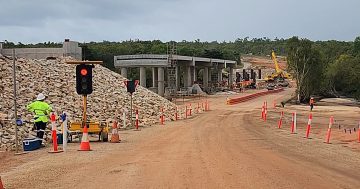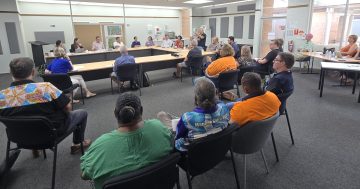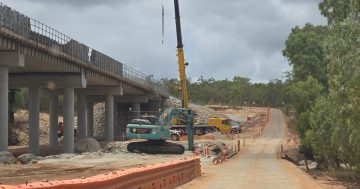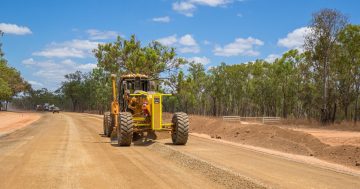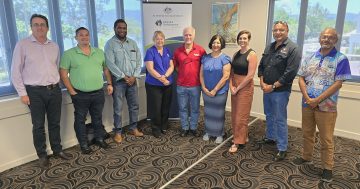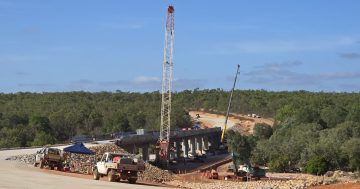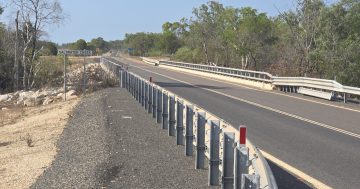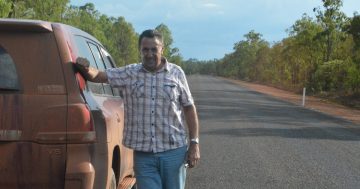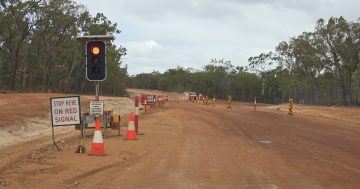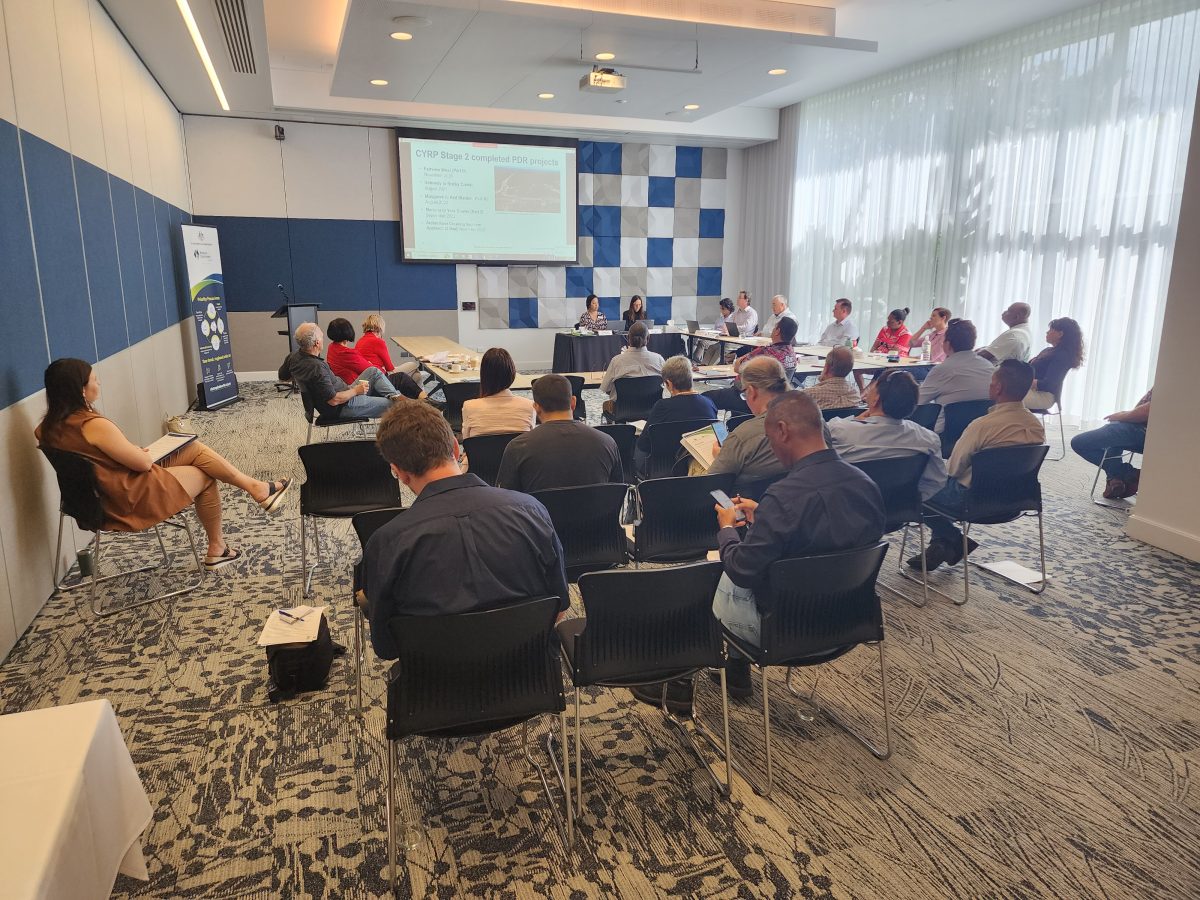
Representatives from the Cape York Region Package taskforce, the Department of Transport and Main Roads, Cape York councils and community members discuss the progress of stage two of the project to seal the Peninsula Developmental Road on 30 May. Photo: Lyndon Keane.
A Cairns forum has demonstrated the “absolute benefit” sealing the Peninsula Developmental Road (PDR) will have on the social, economic and environmental growth of Cape York, according to the co-chair of the Cape York Region Package (CYRP) taskforce.
The taskforce met with representatives from the State Government, Cape York councils and other key stakeholders on 30 May to provide an update on the progress of stage two of the CYRP, and seek feedback on emerging priorities and what future advocacy would look like.
One of the key themes to come out of the forum was the fact the PDR is a “lifeline, not a road” for Cape York residents, as are the community access roads linking places like Aurukun, Pormpuraaw and Lockhart River.
The Department of Transport and Main Roads (TMR) provided an update on the stage two rollout, and admitted the project was suffering “cost and resource pressures”, mainly due to geotechnical issues around the Archer River bridge construction.
TMR North Queensland regional director Ross Hodgman said stage one of the CYRP had targeted “low-hanging fruit” and delivered “bang for buck” through sealing the easiest parts of the PDR, while stage two was incorporating more technical elements, including the bridge.
“It’s been an extremely challenging project,” he told the forum.
Cape York Weekly understands from a number of State Government sources the cost of the bridge has blown out by tens of millions of dollars due to difficulties in constructing its footings.
It is estimated when the bridge opens to traffic in late 2024, the Archer River section of the PDR will only be closed for two or three days each year, down from a current figure of about 85 days.
CYRP taskforce co-chair Professor Allan Dale said the feedback received at the forum reinforced how vital the PDR was to Cape York.
“In terms of continuing input into the completion of stage two, what’s really clear now is the absolute benefit of this in social, economic and environmental terms,” he explained.
With TMR admitting the PDR upgrade could not be assessed by a conventional infrastructure development matrix, Professor Dale’s co-chair, Professor Hurriyet Babacan, said the state and federal governments needed to look at the broader benefits the completion of stages three and four of the CYRP would provide to the region.
“Cost-benefit, narrow infrastructure analysis will not cut it,” she said.
“We need to keep on factoring in those broader definitions of what constitutes a cost benefit [like] social costs, safety costs and also food security.
“If you start monetising these, the costs add up and then a road can come in, and then you get multiple benefits out of it.”


